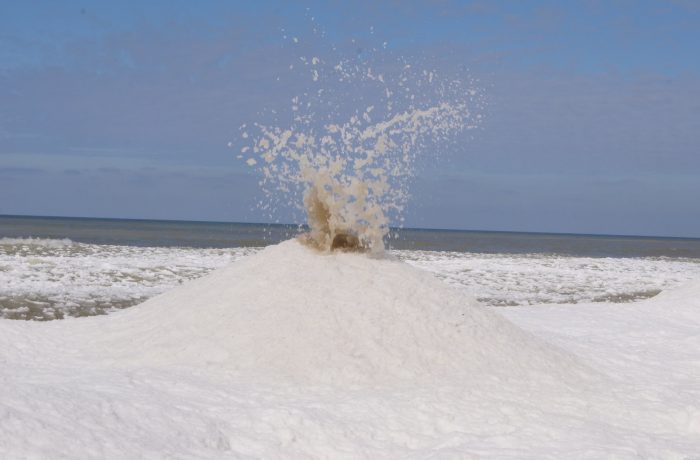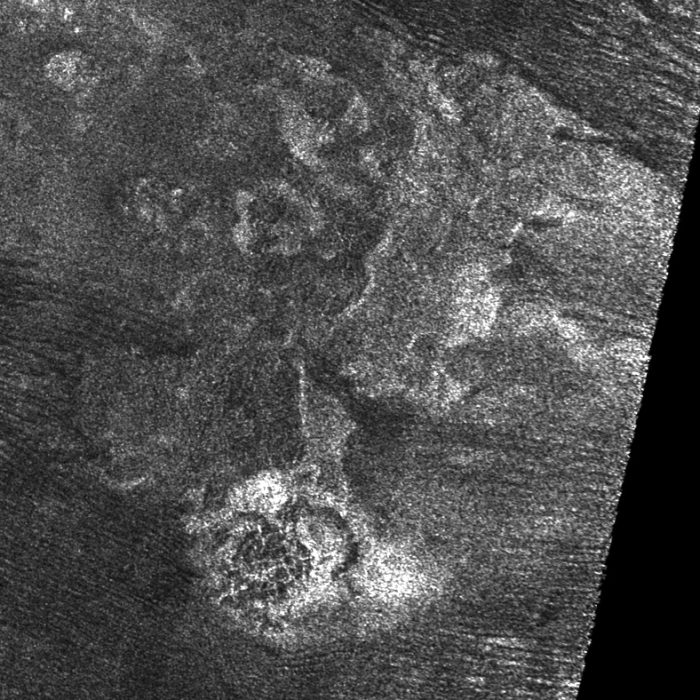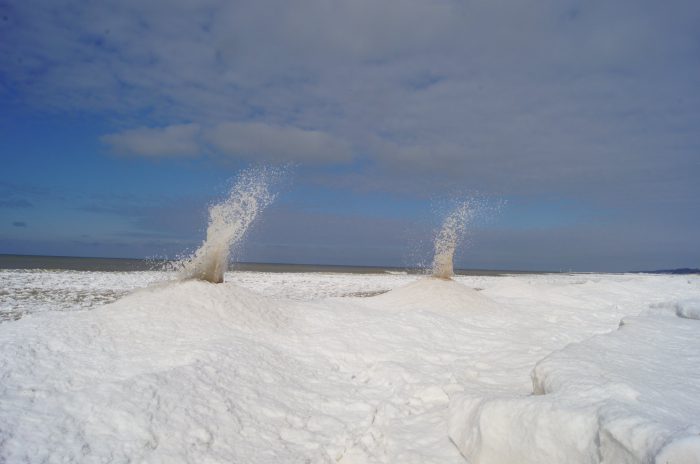When vigorous waves and cold weather combine in just the right way, you can get a thrilling natural formation. Ice volcanoes!
During a cold snap in winter, a thick ice sheet often builds out from the beach of large lakes. If there are also strong onshore winds and waves, they can churn underneath the ice as they hit the shore, creating small holes in the sheet. Water sprays up through these holes, and, if the weather is cold enough, this spray freezes around the hole.
Eventually, the spray builds up and up, creating a mound around the hole. Now the water and slush looks like it's bursting out from a miniature volcano. An ice volcano!
Perfectly frozen

An up-close look at one of the ice volcanoes. (NWSGrandRapids/Twitter)
That's exactly what happened on the shores of Lake Michigan this past February. The National Weather Service station in nearby Grand Rapids, Michigan tweeted out pictures of the phenomena, which we're sharing here. When you think about it, these ice volcanoes are perfectly logical formations. But they're actually quite rare — they require a perfect combination of deep chill, ice formations, and active water.
And as you've likely pieced together, these aren't actual volcanoes. They're much smaller for one. And they certainly don't involve hot magma bursting up from beneath the Earth's crust. But there are other types of ice volcanoes in the solar system that act a little more similarly to a volcano. And since we're on the topic, let's talk about them!
Some volcanoes like it... cold?

Doom Mons, a.k.a. Mount Doom, a large cryovolcano on the surface of Titan. (NASA)
These are called cryovolcanoes. (Cryo- as a prefix means frozen or very cold.) So far, scientists believe that they've been found on dwarf planets Pluto and Ceres, and Saturn's moon Titan. Basically (very basically), this is how it works.
From the outside, these would look a lot like a normal volcano — a mound or mountain with a central crater, or opening. But on bodies with cryovolcanism, there are massive pools of underground liquids, usually water, methane, ammonia, or some combination of them. The heat of the core warms these liquids, building up massive amounts of pressure. When the cryovolcano finally erupts, it sends plumes of liquid and/or vapour into the atmosphere, where it rapidly freezes and settles on the surface. Cool!
Another of Saturn's moons, Enceladus, has enormous ice geysers that are similar to these cryovolcanoes. In fact, the plumes are sent so far off the moon's surface that NASA sent the Cassini probe on a fly-by in 2018 to sample what was inside.
Just goes to show that ice is about a lot more than just staying frozen in place!
 Though not real volcanoes, these ice volcanoes on Lake Michigan were still a sight to see. (NWSGrandRapids/Twitter)
Though not real volcanoes, these ice volcanoes on Lake Michigan were still a sight to see. (NWSGrandRapids/Twitter)









